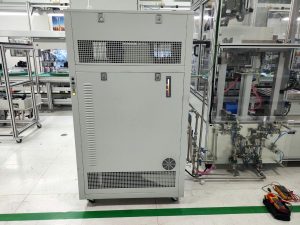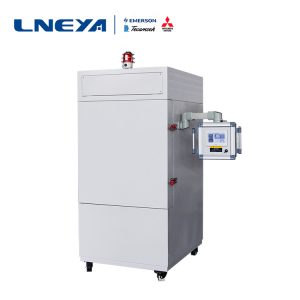Operating Instructions For the Low Temperature Test Chamber
The low temperature test chamber is a necessary test equipment in aviation, automobile, household appliances, scientific research and other fields. It is used to test and determine the parameters and performance of electrical, electronic and other products and materials after the temperature environment changes in high temperature, low temperature, or constant test.
The low temperature test chamber can be used to check and determine the temperature cycling changes of electrical, electronic products or materials, and produce the adaptability of storage and use under environmental conditions. The equipment adopts forced air circulation to maintain the uniformity of temperature in the working room, with green environmental protection, micro-computer control, temperature digital display, adjustable temperature in the box, high-density insulation layer, good insulation effect, energy saving.
The low temperature test chamber should never be used for testing the following objects or those containing them:
(1) Explosives:
1. Nitroglycol (ethylene glycol dinitrate), nitroglycerin (propylene glycol trinitrate), nitrocellulose and other explosive nitrates.
2. Trinitrobenzene, trinitrotoluene, trinitrophenol (picric acid) and other explosive nitro compounds.
3. Peracetic acid, methyl ethyl ketone peroxide, benzoyl peroxide and other organic peroxides.
(2) Combustibles:
1. Spontaneous combustion:
Metals: lithium, potassium, sodium, yellow phosphorus, phosphorus sulfide, red phosphorus.
Cerules: calcium carbide (calcium carbide), phosphatized lime, magnesium powder, aluminium powder, sodium bisulfite.
2. Categories of oxide properties:
(1) Potassium chlorate, sodium chlorate, ammonium chlorate and other chlorates.
(2) Potassium peroxide, sodium peroxide, ingot peroxide and other peroxide salts.
(3) Potassium peroxide, sodium peroxide, barium peroxide and other inorganic peroxides.
3. Flammables:
(1) Ether, gasoline, propylene oxide, carbon disulfide and other substances whose ignition point is less than – 30 C.
(2) Common ethane, oxidized alkene, acetone, benzene, methyl ethyl ketone and other substances whose ignition point is above – 30℃ but below 0℃.
4. Flammable gases:
Hydrogen, acetylene, ethylene, methane, ethane, propane, butane and other gases that may burn at 1 atmospheric pressure at 15 C.
관련 권장 사항
-
코로나19에 대한 글로벌 협력, LNEYA는 능력 범위 내에서 지원 제공
1501At the current stage of virus transmission, it is imperative to study effective drugs and vaccines against coronavirus. As a manufacturer of high-precision temperature control technology, we believe that it is our responsibility to support the wo...
세부 정보 보기 -
Automotive antifreeze test test temperature control system
1050When it comes to car antifreeze, we all know that its main function is to prevent the coolant from freezing and cracking the radiator and freezing the engine cylinder block or cover when we stop in the cold winter. Make the cooling system in the ...
세부 정보 보기 -
원자로의 냉장 및 난방 시스템 고장에 대한 솔루션
1033원자로 냉동 및 가열 시스템의 파이프 재료를 선택할 때 파이프 연결, 파이프 선택 및 파이프 재료에주의를 기울여야합니다. 파이프에는 냉각 및 가열이 포함되므로 반드시 ...
세부 정보 보기 -
Current status of hot and cold rapid temperature change test chamber
1068At present, manufacturers of hot and cold rapid temperature change test chambers are sprouting like spring bamboo shoots, but there are several manufacturers that really grasp the quality. When purchasing a test box, the buyer must first look at t...
세부 정보 보기
 LNEYA 산업용 냉각기 제조업체 공급 업체
LNEYA 산업용 냉각기 제조업체 공급 업체













